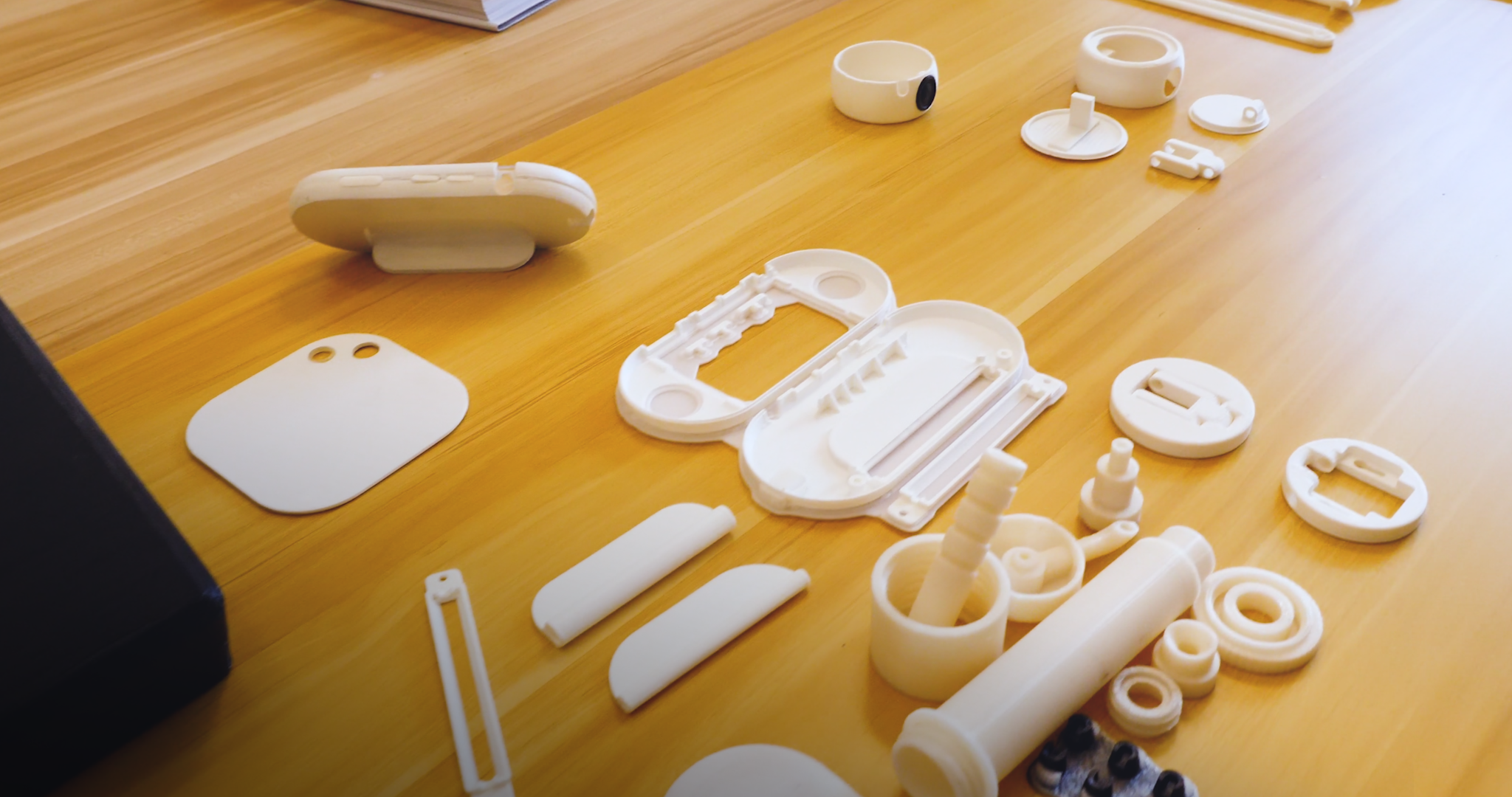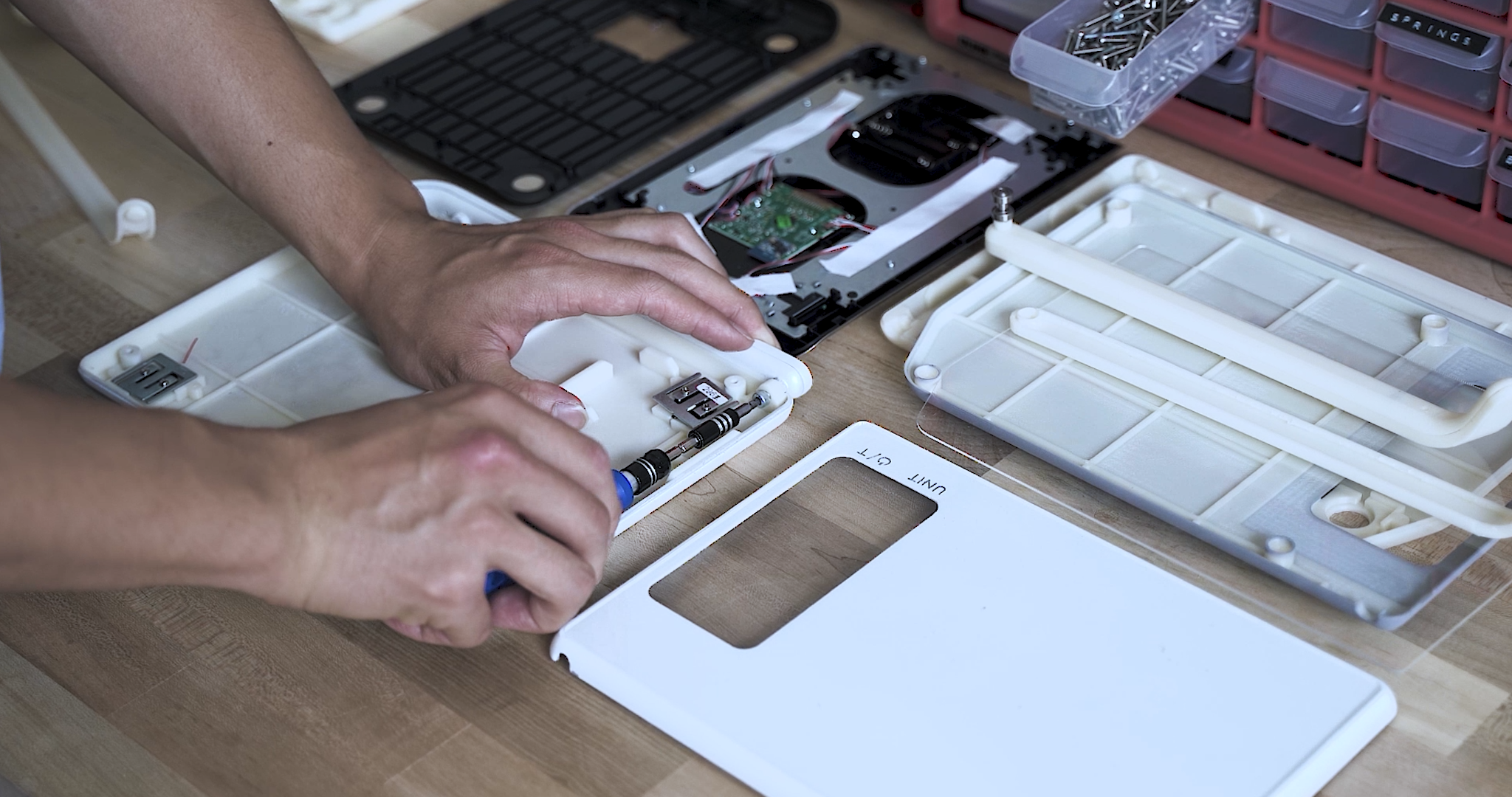Founded by three alumni from the Rhode Island School of Design, Spatial Dynamics, a design consultancy, is on a mission to help clients turn their product dreams into reality. The company, which was established in 2020, already won its first Red Dot Design Award for their Nutri kitchen Scale Concept developed along with MIT’s Hanlab
Since the company’s inception, 3D printing has played a major role in its product design and engineering.
“3D printing has always been part of our design workflow,” said Raymond Lin, co-founder and industrial designer. “We learned to use 3D printing as part of our design process when we were undergraduates. Learning how 3D printing plays a role in design has helped us understand how to leverage it to create better prototypes, allowing us to help our clients bring their products to market faster.”
PERFECT PROTOTYPING
The company uses different 3D printing technologies, including FDM and resin 3D printers. Among its tools are a MakerBot METHOD X and a MakerBot Replicator Z18.
“We use the METHOD X specifically for prototyping, but at different fidelities,” noted Lin. “Most of the time, we use it to quickly build rough prototypes that we can physically test our concept with. But there are times when we use it to build more finished, “white glove” prototypes that look very close to how the end-product is going to look like. These prototypes can be used for product photography or as show pieces.”
Before METHOD X, the designers used other FDM technologies. However, they didn’t offer the precision and dimensional accuracy that METHOD X was capable of. As a result, they would have to allocate more time for 3D printing prototypes to account for potential issues. There was a chance that things could go wrong—dimensions might be slightly off, finishing might be too rough and affect the mechanical features, or prints would simply keep failing.
Reprinting or manually fixing these issues added more time–sometimes time they didn’t have–to their process. With the potential to fall behind on deadlines, the team needed a solution that wouldn’t impact their lead times. With METHOD X, they were able to design and iterate quickly thanks to the printer’s reliability and high performance. Prototypes that would sometimes take weeks to make, and might end up in the trash bin, would now take days to perfect.
“METHOD X has really saved us a lot of headaches,” said Lin. “It’s one of the easiest printers to learn how to use. You never have to constantly tinker or troubleshoot. Simply put the CAD file into MakerBot CloudPrint and send it to the printer. METHOD X will get the job done reliably. Thanks to the METHOD X, we can rapidly print out parts that have great dimensional accuracy, which can be immediately used to mechanically test if certain designs are feasible.”
“Sometimes software is a bit overlooked. But MakerBot CloudPrint is my favorite feature,” continued Lin. “I can set up and start a print no matter where I am. All the controls on CloudPrint are simple and straightforward. Plus, I like the live feed of the printing process. The onboard camera allows me to check on my print anytime and from anywhere, giving me peace of mind that my print is going smoothly.”

MAKING AN IMPACT IN THE WORLD
Creating new and exciting products that can make an impact on society is at the heart of Spatial Dynamics. The team has worked on innovative products, including a smart waste management system and an AI dementia monitoring system.
Another interesting project the team is working on is producing a medical device for law enforcement that will allow them to conduct drug tests on drivers. The product is designed to make it safer for people on and off the road.
The project was intense due to the high number of internal structures in the client’s original design that would need support. Creating a structurally-sound prototype would be difficult without the right tools. The internal structures of the drug test device needed to be strong, precise, and suitable for mounting heat set inserts since it supports and holds together all the PCB components of the device.
The designers prototyped the part with MakerBot ABS-R and MakerBot RapidRinse, a water-soluble support material. This allowed them to print with a durable material to test strength, while also leveraging an easy-to-dissolve support material. The result: a white-glove 3D-printed functional prototype with final parts printed from METHOD X that the client was able to use to showcase their idea. Ultimately, the product will be injection molded, but METHOD X was able to produce a design that would be used for the final product.
“The reliability and convenience of these two materials really made a difference in our prototyping cycle,” said Quincy Kuang, co-founder and design engineer. Kuang worked at leading 3D printing companies including MakerBot and Formlabs. “RapidRinse is really a game changer in that it allows us to quickly evaluate our models without worrying about taking a long time to remove the support structure. It’s very reliable too, especially for prints with large areas of overhangs.”
Kuang and his colleagues use different materials for their prototypes, depending on the need of the product. ABS-R has been the material of choice due to its durability and proximity to injection molding, but the team has also tested with ASA for outdoor scenarios and nylon carbon fiber for products that need extra strength.
“3D printing is the only way to prototype parts like this,” Kuang continued. “Previously, we struggled with the dimensional accuracy from other 3D printers. But with METHOD X, we didn’t have to worry about tolerance and were able to focus on efforts on the actual design. Precision and convenience are the two most competitive advantages that METHOD offers. To get an equally precise part for testing, I would have to order SLS prints from 3D printing service bureaus, which can be costly and slow. With METHOD, I can get equally accurate results in just a few hours.”
Integrating METHOD X into their design process has given the Spatial Dynamics team a competitive edge. And for the team, 3D printing has the potential to unlock even more doors.
“I’m excited to see where 3D printing takes us. I’ve seen how it can change product design, so I can only imagine what it can change next,” said Kuang. “I see the 3D printing industry shifting toward manufacturing, so we might be able to have factory-level manufacturing capability readily inside our homes in the future.”

For more information on the METHOD X 3D Printer range, contact MakerBot Australia.


Recent Comments